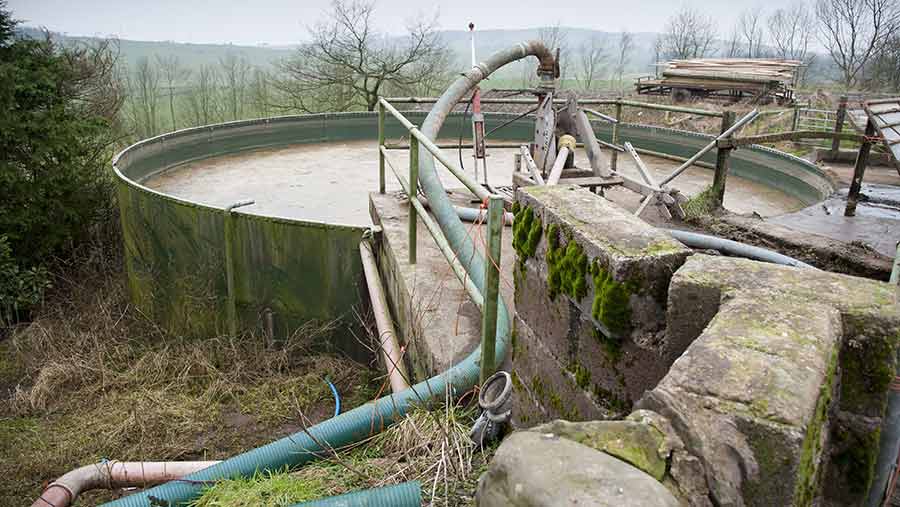Wet weather raises slurry storage concerns
 © FLPA/REX/Shutterstock
© FLPA/REX/Shutterstock Farmers are being urged to think carefully before spreading manure in the wake of one the wettest Decembers in living memory.
The unprecedented flooding has hampered both the storage and spreading of slurry for farmers and contractors, especially in northern England and Wales.
As a result, many stores are full after fields were left waterlogged and therefore unsuitable for slurry spreading.
Rob Howells, NFU water quality adviser, said: “For many farmers and contractors conditions are not really suitable for spreading manure following weeks of wet weather.
“If they are getting close to storage capacity and have concerns and are unable to get a window to get out and spread, they really need to speak to the Environment Agency.”
See also: Farmers face water pollution clampdown
The use of nitrogen fertilisers and organic manures is restricted in nitrate-vulnerable zones (NVZs) in England and Wales.
Heavy rain and flooding, especially on sloping fields, increases the risk of run-off potentially causing water pollution.
Farmers are being reminded that anyone spreading slurry during these times, or equally in the closed period, could face cross-compliance penalties.
The closed period for spreading slurry on shallow or sandy soils on grassland or arable land ended on 31 December 2015. However, depending on the soil type, it is still in place until mid-January or the start of February.
NVZ rules state that farms must provide sufficient storage facilities to store all slurry produced by livestock during a period of six months for pigs and poultry (1 October to 1 April) and five months for cattle (1 October to 1 March).
There has been no indication from Defra that NVZ rules will be relaxed due to the severe wet weather to allow farmers to spread slurry when stores are approaching capacity.
But Mr Howells said farmers who were experiencing concerns over capacity should be able to get help on a case-by-case basis from the Environment Agency.
“The agency can help identify low-risk fields to help farmers get out as soon as ground conditions are suitable,” he added.
“If need be, they can also help with temporary slurry storage. It’s really important that farmers don’t just stick their heads in the sand.”
For Welsh farmers, Natural Resources Wales has issued guidelines explaining how they can best cope with the current situation.
These include:
- Spread slurry as thinly as possible: no more than 30cu m/ha. If possible allow three weeks between each spreading – a legal requirement in NVZ areas – and target lighter land, as this may warm up more quickly
- Walk the fields before spreading to assess the risks of water pollution from slurry run-off and soil damage
- Use as much land as safely as possible, while maximising the no-spreading distance on down-slope field edges and targeting land with good grass cover
- Keep records of the quantity, date and field location of each application – a legal requirement in NVZ areas.
The Code of Good Agricultural Practice (PDF) contains advice on slurry spreading. It includes the need to avoid spreading on land that is waterlogged or frozen.
In England, for more information on using nitrogen fertilisers and manures in NVZs and other requirements of cross-compliance, contact the Farming Advice Service on 0345 345 1302 (Monday to Friday, 8am to 6pm) or email advice@farmingadviceservice.org.uk
Welsh farmers can contact Natural Resources Wales’ customer service line on 0300 065 3000 to clarify points and confirm any intended actions.
In Scotland, full details of guidance and rules on slurry spreading can be found on the Scot.gov website. In Northern Ireland, details can be found under the government’s Nitrate Action Programme (PDF).
Over the next few months, Defra is due to launch a consultation on new guidance for complying with rules for NVZs after January 2017.
